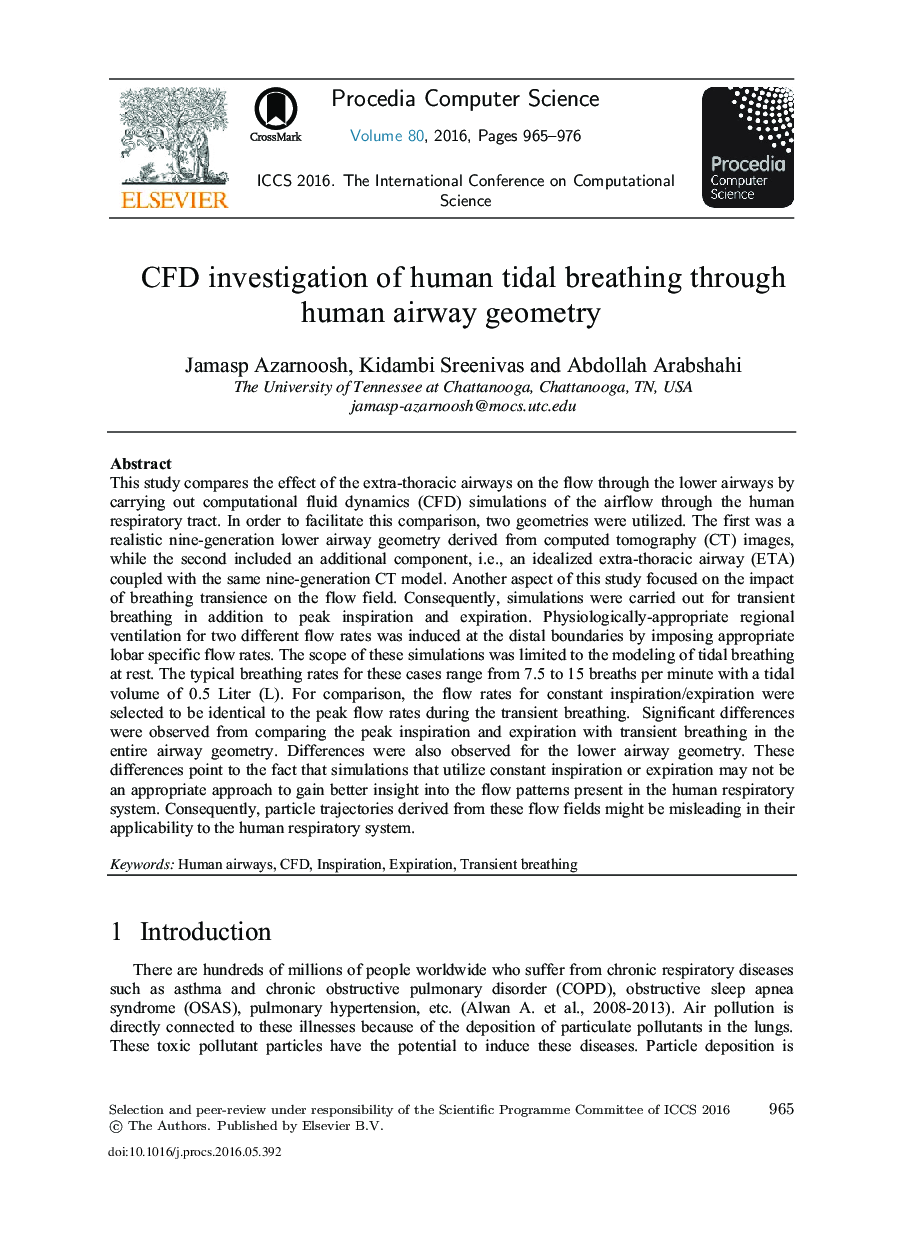| کد مقاله | کد نشریه | سال انتشار | مقاله انگلیسی | نسخه تمام متن |
|---|---|---|---|---|
| 484157 | 703253 | 2016 | 12 صفحه PDF | دانلود رایگان |

This study compares the effect of the extra-thoracic airways on the flow through the lower airways by carrying out computational fluid dynamics (CFD) simulations of the airflow through the human respiratory tract. In order to facilitate this comparison, two geometries were utilized. The first was a realistic nine-generation lower airway geometry derived from computed tomography (CT) images, while the second included an additional component, i.e., an idealized extra-thoracic airway (ETA) coupled with the same nine-generation CT model. Another aspect of this study focused on the impact of breathing transience on the flow field. Consequently, simulations were carried out for transient breathing in addition to peak inspiration and expiration. Physiologically-appropriate regional ventilation for two different flow rates was induced at the distal boundaries by imposing appropriate lobar specific flow rates. The scope of these simulations was limited to the modeling of tidal breathing at rest. The typical breathing rates for these cases range from 7.5 to 15 breaths per minute with a tidal volume of 0.5 Liter (L). For comparison, the flow rates for constant inspiration/expiration were selected to be identical to the peak flow rates during the transient breathing. Significant differences were observed from comparing the peak inspiration and expiration with transient breathing in the entire airway geometry. Differences were also observed for the lower airway geometry. These differences point to the fact that simulations that utilize constant inspiration or expiration may not be an appropriate approach to gain better insight into the flow patterns present in the human respiratory system. Consequently, particle trajectories derived from these flow fields might be misleading in their applicability to the human respiratory system.
Journal: Procedia Computer Science - Volume 80, 2016, Pages 965–976